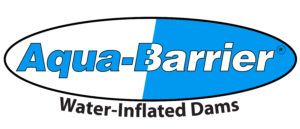With their unpredictable nature and destructive force, natural disasters are not a force to be reckoned with. While we cannot control the weather, there are proactive measures that we can take in order to mitigate the damages of a natural disaster such as a flood.
A flood can occur through many different ways outside of the typically acknowledged tropical storm or hurricane. Melting snow in the springtime, dam failures, tidal surges, and even local drainage issues can all contribute to a flood in your area. When a flood occurs in a residential home, homeowners can expect much of their valuables and property to be damaged or destroyed.
However, when a flooded wastewater treatment plant suffers damage, a whole community of people, including the personnel employed in the plant, can face far larger issues.
Clean drinking water becomes compromised during a flood, as power outages may hinder the plant’s operations and damaged assets in the plant may impede the conversion process of turning wastewater into a reusable water source.
Preventing a Flooded Wastewater Treatment Plant
According to the US EPA, practicing mitigation options is the best way to prevent floodwater from invasively appearing. Some of these options include crafting barriers around key assets, having an emergency back-up generator, and keeping key electrical equipment elevated.
Keeping these tips in mind will help to keep your wastewater facility from having to shut down. Back-up generators can prevent power outages and barriers/elevated equipment will minimize damage to the plant’s facilities and keep the staff from enduring dangerous working conditions.
The WIPP® Solution
Consider WIPP® as a solid solution for preventing invasive waters from entering your water or wastewater facility. This innovative water inflated flood barrier, acts as your property’s bodyguard, blocking any floodwater from entering. Installing the WIPP around the barrier of your plant before the start of a possible flood will greatly minimize and prevent any damage from occurring. Once all of the water has dissipated, the WIPP can simply be deflated and stored for the next possible flood occurrence.
Flood damage can reap havoc on treatment plants that are not well prepared, leaving you and your community at a disadvantage for clean drinking water.
Learn More
Hydrological Solutions is aware of the potential harm that floods may cause as we work toward protecting your water or wastewater facility from unforeseen and devastating damage. Contact us to learn more about being prepared for disastrous floods.


